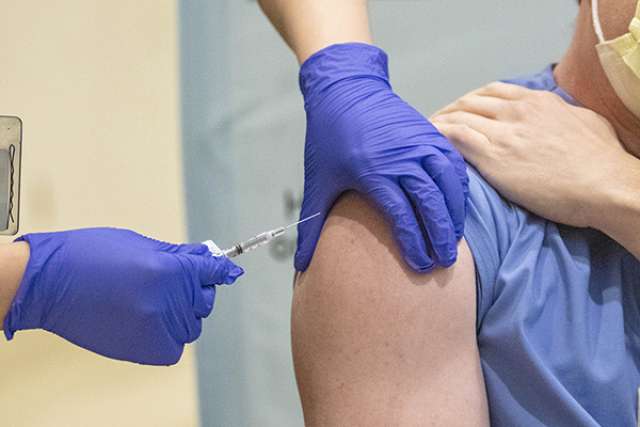More than 140 million Americans have gotten the COVID-19 vaccine. Health care and government leaders hope that tens of millions more will do so.
One key to getting that many needles in that many arms may turn on the messaging used to persuade people that getting the vaccine is the right thing to do. As the country seeks to turn the page on the pandemic, two UCLA professors who specialize in the impact of messaging efforts — Hal Hershfield and Keith Holyoak — have identified opportunities and challenges on the road to herd immunity.
In March of 2020, the World Health Organization declared the spread of the novel coronavirus to be a pandemic. UCLA and other institutions pivoted to remote learning. And Holyoak, distinguished professor of psychology, and graduate student Hunter Priniski began to study perceptions of the virus by performing surveys and analyzing the language used on relevant threads on Reddit.
One lesson: Several months before a COVID-19 vaccine existed, COVID-19 vaccine hesitancy already was going strong. This was in part due to distrust of medical authorities such as the World Health Organization and the U.S. Centers for Disease Control and Prevention, doubts sown by President Trump and others as the pandemic became a political crisis.
"One thing we know for sure is that a virus doesn't care if you are a Democrat or a Republican, but there was a big split from the start," said Holyoak, who published research in 2015 on how to persuade skeptical parents to allow their children to get the measles vaccine. In a recent UCLA Psychology Presents discussion, Holyoak summarized his and Priniski's COVID-19 messaging findings this way: "The more politics gets tied into science and medicine, the more potential there is for distortion."
Yet political preference and skepticism of medical authorities are not the only drivers of vaccine hesitancy. The COVID-19 vaccines were developed quickly. According to the Centers for Disease Control and researchers studying the pandemic, public health authorities have had less success reaching under-resourced communities, rural areas and racial and ethnic minorities with factual information.
As Hershfield, an associate professor of marketing and behavioral decision-making at the UCLA Anderson School of Management, put it, "The segments that are most at risk are getting the least amount of information."
Hershfield said a successful effort to expand use of the vaccine will require diverse voices on diverse platforms. "One-size-fits-all messaging solutions are as imaginary as unicorns," he said. "When we think of the group on the 'vaccine fence,' there is not just one strategy or one medium we can use to get to them."
Earlier this year, Hershfield and his student Ilana Brody wrote a piece in Scientific American that harkened back to simpler times. The year was 1956, and despite the serious threat that polio presented and the widespread availability of Jonas Salk's vaccine, less than 1% of Americans had been inoculated. Then teen idol Elvis Presley bared his arm for a vaccination photo op while backstage before an appearance on the popular and influential Ed Sullivan Show. Within six months, Hershfield and Brody report, an overwhelming majority of American teens had gotten the shot.
The ingredients for success: A vivid example, social influence and an understanding of social norms.
But one social norm that has changed in the United States since Elvis was king is that Americans no longer tune in to any one voice. If Ariana Grande — with her 227 million Instagram followers — talks, will people listen? "Influencers with millions of followers are great for getting attention," Hershfield said. "But it is not clear whether they drive action."
Key voices for the vaccine, he said, are the "micro influencers" or "nano influencers," those with vibrant and diverse audiences who connect with their audiences in a personal way.
These people are not only on social media. Holyoak said there is room for medical experts, but not necessarily the ones most likely to be on the airwaves.
"Even people who are high in medical skepticism will do what their doctor tells them," Holyoak said. "They still do trust their own doctors."
Hershfield readily acknowledges that those most eager to get the vaccine likely already have, and that the most reluctant likely never will. It is that group in the middle that may be key to putting the crisis behind us.
"The most effective thing would be to fully understand what the barriers are so that we can best tailor the messages to meet people where they're at," Hershfield said. "Time is of the essence here."



